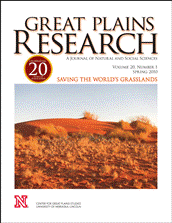Center for Great Plains Studies

Great Plains Research: A Journal of Natural and Social Sciences (through 2013)
Date of this Version
Fall 2003
Document Type
Article
Abstract
The Hispanic population of Lexington, seat of Nebraska's Dawson County, increased nearly tenfold between 1990 and 2000, from just over 400 to about 4,000, and the city's population grew from 6,600 to over 10,000. Economic trends in the 1990s contrast sharply with the previous decade, when the county's population and overall employment declined rapidly. This episode of immigration provides a unique opportunity to analyze the economic impact of immigration on a local economy. Traditional models of immigration, which focus almost entirely on the effects of immigration on labor supply, predict that immigration depresses wages and raises unemployment rates. However, census data and other evidence on Dawson County's economy suggest exactly the opposite occurred during the 1990s. This article provides an explanation of the effects of immigration on Dawson County's economy that is considerably more accurate than the explanation that would be offered by traditional immigration models: immigration stimulated both labor supply and demand, thus explaining the subsequent rebound in employment, average wages, and economic growth.


Comments
Published in Great Plains Research 13 (Fall 2003): 291-309. Copyright © 2003 Center for Great Plains Studies, University of Nebraska – Lincoln. Used by permission.